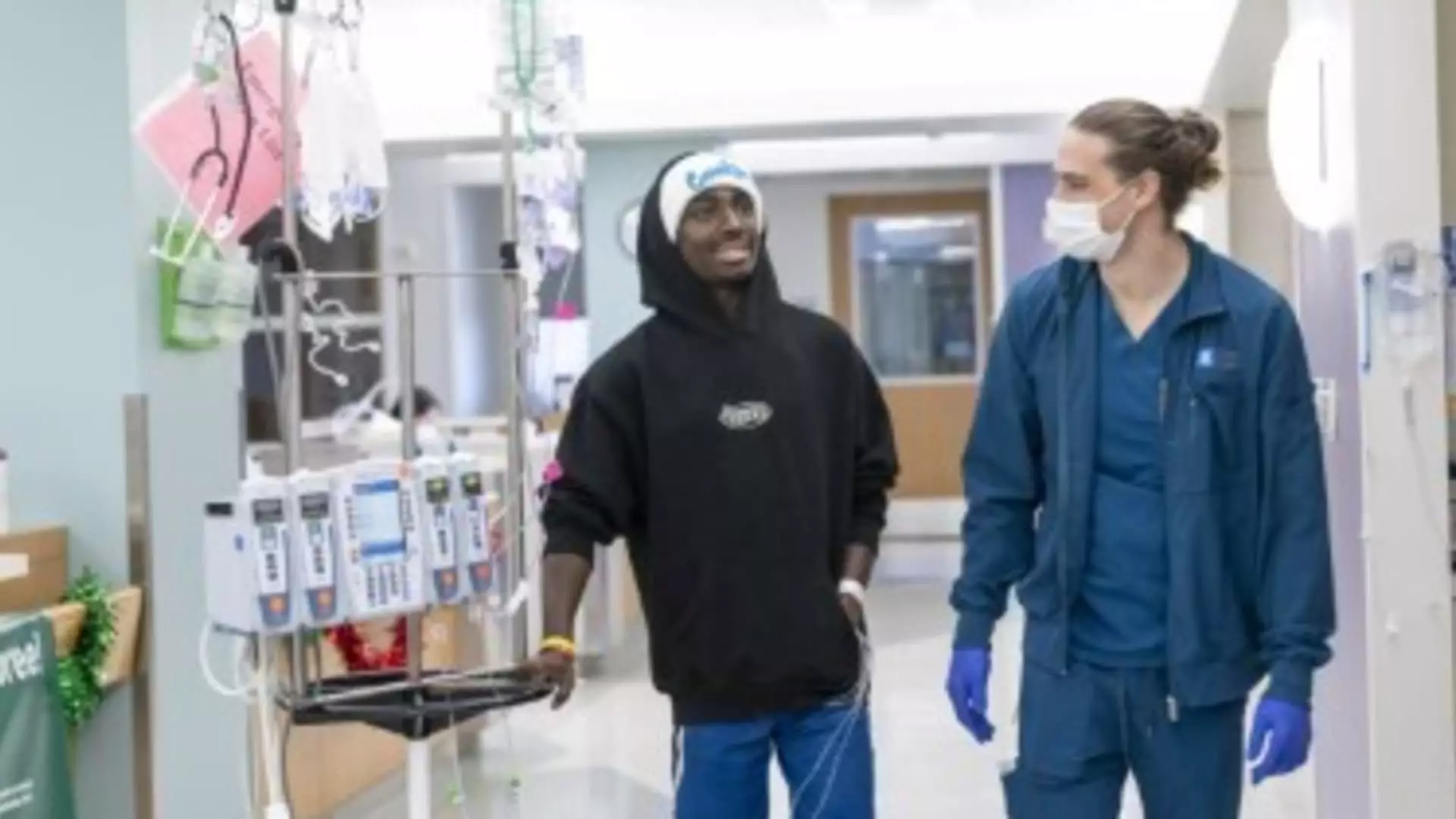Sickle cell disease, a genetic blood disorder primarily affecting individuals of African descent, creates significant health challenges, notably severe pain episodes and hospitalizations. For adolescents like Deshawn “DJ” Chow, living with this condition often means confronting the possibility of an uncertain future. At just 19 years old, the cycle of pain and care led DJ to question whether he could ever lead a normal life. Recently, however, advancements in gene therapy have sparked hope for DJ and the broader sickle cell patient community.
In the past year, the approval of new gene therapies by the Food and Drug Administration (FDA) has opened doors for patients whose conditions are manageable. DJ was among the fortunate few to receive Casgevy, an innovative gene therapy from Vertex Pharmaceuticals that costs upwards of $2 million per patient. This treatment not only requires extensive hospital visits but also involves chemotherapy, which adds to the overall financial burden. DJ’s parents, fortunately, found support from City of Hope Children’s Cancer Center in Los Angeles, and their employer-provided insurance has significantly alleviated costs. DJ’s father, Sean Chow, expressed his gratitude, noting the relief brought by the insurance coverage amidst the high financial stakes.
These treatments aim to correct the underlying genetic mutations that lead to misshapen red blood cells, a hallmark of sickle cell disease. The ability to access such advanced therapies represents a new chapter in the management of this condition, particularly for younger patients whose organs have not yet experienced severe damage. As DJ completes his treatment, he begins to envision a life previously stunted by health constraints—activities like snowboarding and surfing are now part of his dream.
Despite the excitement surrounding these new treatments, the scale of patient access remains troublingly low. Approximately 100 patients received the gene therapy in the first year since FDA approval—far from the thousands who could potentially benefit. Executives from Vertex Pharmaceuticals acknowledged the slow rollout, while competitors such as Bluebird Bio also report limited patient uptake, despite their own promising therapies. These figures highlight systemic inefficiencies that challenge the healthcare landscape.
One major obstacle that these treatment centers face is navigating insurance coverage for high-cost therapies. Jennifer Cameron, executive director of patient access at Children’s National Hospital, noted earlier disruptions in coordinating with insurers, but also indicated improvements. However, providing adequate coverage for such expensive treatments remains a daunting task. Dr. Leo Wang from City of Hope underscored the ongoing difficulties posed by treatment prices, stressing that employer-based insurance often struggles to meet these needs.
The increasing demand for gene therapies underscores a pressing need for innovative payment models in healthcare. Discussions around potential new financial frameworks, including risk pools among insurers and collaborative agreements among large payers, are gaining momentum. David Joyner, CEO of CVS Health, indicated that without such changes, the burden of high therapy costs could overwhelm individual states or companies.
State Medicaid programs, which cover over half of all sickle cell patients, are particularly vulnerable to these financial stresses. A coordinated effort is necessary to ensure sustainability in providing care, especially in states with high populations of sickle cell patients, namely Georgia, Florida, and Mississippi. The Biden administration’s Medicare and Medicaid cell and gene therapy payment model is a governmental effort to alleviate financial pressures while also expanding access. Though intended support for states and outcomes-based pricing is valuable, health experts caution that these measures may not fully bridge the gap in funding.
As healthcare administrators and policymakers grapple with these financial implications, the need for accessible treatment options remains a top priority for families affected by sickle cell disease. While the path to successful implementation may be fraught with challenges, the voices of patients and families, such as the Chows, amplify the urgency. They seek the right to high-quality care that promises to radically change the lives of patients like DJ.
Sean Chow’s hopes for his son exemplify the broader aspirations of the sickle cell community. “Having a child with sickle cell has been heartbreaking,” he confessed, yet he remains hopeful for a landscape where other families can access similar transformative therapies without insurmountable financial barriers. The journey toward affordable treatment is ongoing, but with continued advocacy and systemic reforms, a future filled with promise lies ahead for those battling this debilitating disease.

